Unraveling the Secrets of Georgia’s Coastal Plain
Hey there, explorers! Ready to uncover the mysteries of Georgia’s captivating Coastal Plain? This guide will be your compass, leading you through its captivating geological history and diverse natural wonders, from the dramatic Fall Line to the sandy shores of the Atlantic. Whether you’re a geology enthusiast, a nature lover, or simply curious about this fascinating region, let’s embark on a journey of discovery!
Where Exactly is Georgia’s Coastal Plain?
Imagine an invisible line gracefully meandering across Georgia, connecting the cities of Augusta and Columbus. This line, known as the Fall Line, acts as a natural border, separating the hilly Piedmont region to the north from the gently sloping Coastal Plain to the south. The Coastal Plain stretches out like a vast, verdant ribbon along Georgia’s Atlantic coast, encompassing nearly half of the state’s land area.
But how can you tell when you’ve crossed into this captivating region? Nature provides some telltale signs! Look out for waterfalls or rapids in the rivers—these dramatic drops often occur along the Fall Line, where the land elevation changes. As you venture further south, the landscape will gradually flatten out, and you’ll encounter the Coastal Plain’s signature features.
What Makes Georgia’s Coastal Plain Unique?
A Tapestry of Diverse Landscapes
The Coastal Plain is anything but monotonous. Within this region, you’ll discover a remarkable variety of ecosystems, each with its unique charm and ecological significance.
- Barrier Islands: Imagine pristine sandy beaches, rolling dunes covered in sea oats, and maritime forests teeming with life. Georgia’s barrier islands, such as Tybee Island, Jekyll Island, and Cumberland Island, are like a string of pearls along the coast, protecting the mainland from the ocean’s fury while providing havens for wildlife.
- Marshes and Estuaries: Venture inland, and you’ll encounter a world of winding waterways, vast stretches of salt marsh grasses, and hidden coves. These productive ecosystems, where freshwater rivers meet the salty sea, serve as vital nurseries for countless marine species and help filter pollutants, keeping the coastal waters healthy.
- Okefenokee Swamp: Prepare to be enchanted by the wild beauty of the Okefenokee Swamp, the largest blackwater swamp in North America. Shrouded in mystery and teeming with life, this southern gem boasts towering cypress trees draped in Spanish moss, dark, tea-colored water, and an array of creatures, from alligators to carnivorous plants.
A Legacy Etched in Rock and Sediment
The Coastal Plain’s flat topography results from millions of years of geological processes. Over time, ancient seas that once covered this area deposited layers upon layers of sediment, which eventually hardened into sedimentary rock. This softer rock is more easily eroded than the older, harder rocks found in the Piedmont region, contributing to the Coastal Plain’s lower elevation and distinctive landforms.
Exploring Beyond the Surface: Habitats and History Intertwined
A Mosaic of Coastal Habitats
Georgia’s coastal habitats are as diverse as they are captivating, each harboring a unique tapestry of life:
- Beaches and Dunes: These dynamic environments, shaped by wind and waves, are home to specialized plants like sea oats that help stabilize the dunes, as well as shorebirds, sea turtles, and other creatures adapted to life on the edge of the sea.
- Salt Marshes: These coastal wetlands, flooded and drained by saltwater tides, might seem like barren landscapes at first glance, but they are incredibly productive ecosystems. Look closely, and you’ll find salt-tolerant grasses, fiddler crabs scuttling through the mud, and a wealth of birdlife.
- Maritime Forests: Step into the enchanting world of Georgia’s maritime forests, where ancient live oak trees draped in Spanish moss stand as sentinels against the salty air. These forests provide habitat for a variety of animals, including deer, raccoons, reptiles, and migratory birds.
- Rivers and Estuaries: Where freshwater rivers flow into the sea, they create estuaries—brackish water environments teeming with life. These vital habitats serve as spawning and nursery grounds for many fish and shellfish species and attract a diversity of birds and other wildlife.
A History Shaped by the Coast
The Coastal Plain’s natural resources have played a pivotal role in shaping Georgia’s history and culture. From early indigenous communities who relied on the abundance of the sea to European settlers who established rice plantations along the rivers, the coast has long been a place of both sustenance and inspiration.
Protecting a Fragile Treasure: Challenges and Conservation
Today, Georgia’s coastal habitats face growing threats from human activities and a changing climate. Development pressures, pollution, and sea-level rise pose significant challenges to the delicate balance of these ecosystems. Yet, amidst these challenges, there is hope. Numerous organizations and individuals are working tirelessly to protect and restore these invaluable natural treasures for future generations.
Go Explore!
Uncovering the secrets of Georgia’s Coastal Plain is an adventure best experienced firsthand. Whether you’re drawn to the allure of its pristine beaches, the mystery of its ancient swamps, or the ecological wonders of its diverse habitats, there’s something to captivate every explorer. So, grab your hiking boots, your binoculars, or simply your sense of wonder, and embark on a journey through this captivating region where history, culture, and nature intertwine.
- Senior at What Age: Benefits & Eligibility Guide - March 29, 2025
- Unlocking Senior Benefits: How Old is a Senior? Your Complete Guide - March 29, 2025
- Master Russian Politeness:A Guide to Saying Please - March 29, 2025

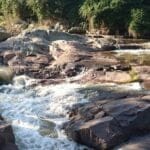
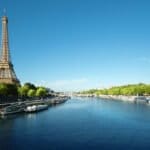
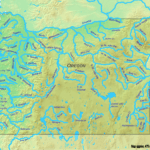

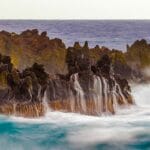
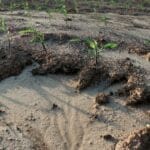










1 thought on “Pinpointing Georgia’s Coastal Plain: A Guide to Finding its Boundaries”
Comments are closed.